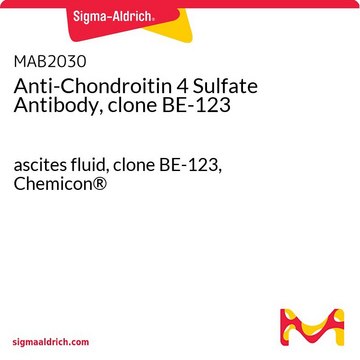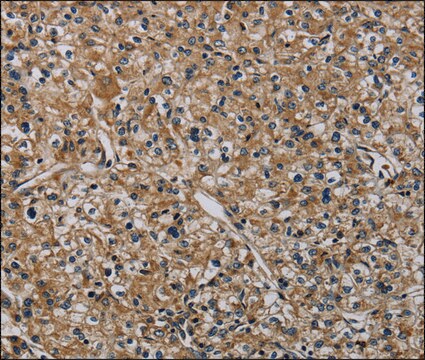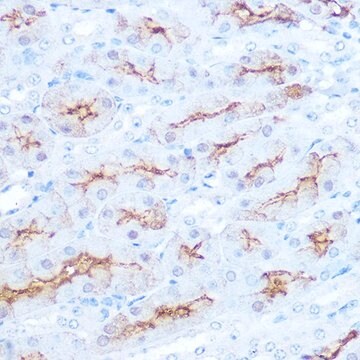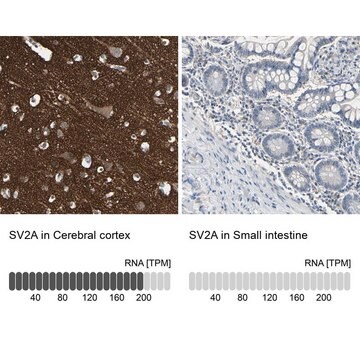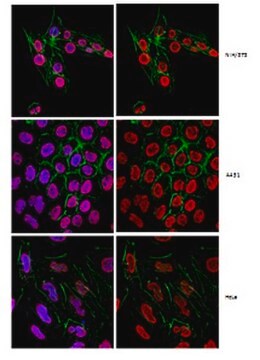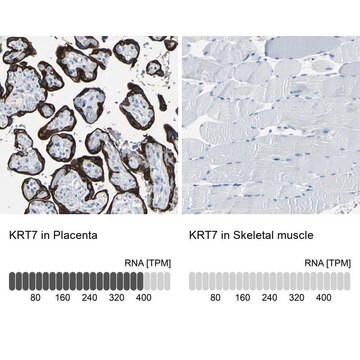Opis ogólny
Legumina (UniProt: Q99538; znana również jako EC: 3.4.22.34, Asparaginyl endopeptidase, AEP, Protease cysteine 1, Delta Secretase) jest kodowana przez gen LGMN (znany również jako PRSC1) (Gene ID: 5641) u człowieka. AEP jest lizosomalną endopeptydazą, która wykazuje ścisłą specyficzność dla hydrolizy wiązań asparaginylowych i może jednocześnie rozszczepiać zarówno białko prekursorowe amyloidu (APP), jak i tau. Powoli rozszczepia wiązania asparaginylowe, szczególnie w warunkach kwaśnych. AEP jest syntetyzowany z peptydem sygnałowym (aa 1-17) i propeptydem (aa 324-433), które są odcinane w dojrzałej formie. Istnieje jako homodimer przed usunięciem propeptydu, a po autokatalitycznym przetwarzaniu istnieje jako monomer. W formie zymogenu, nierozcięty propeptyd blokuje dostęp do miejsca aktywnego. AEP jest fosforylowana na serynie 226 przez serynowo-argininową kinazę białkową 2 (SRPK2), co przyspiesza jej autokatalityczne rozszczepienie i zwiększa jej aktywność enzymatyczną. Aktywna forma ulega translokacji do cytoplazmy. W mózgach chorych na chorobę Alzheimera AEP jest silnie fosforylowana. Wykazano, że pozbawienie AEP zmniejsza produkcję peptydów amyloidowych i tworzenie płytek starczych w mózgu myszy 5XFAD, co prowadzi do przywrócenia aktywności synaptycznej i funkcji poznawczych. Opisano trzy izoformy AEP, które są wytwarzane przez alternatywny splicing. (Ref.: Wang Z-H., et al. (2017). Mol. Cell 67(5); 812-825; Zhang, Z et al (2015). Nat. Commun. 6; p. 9762).
Specyficzność
To królicze przeciwciało poliklonalne specyficznie wykrywa endopeptydazę asparaginylową fosforylowaną na serynie 226.
Immunogen
Epitop: nieznany
Liniowy peptyd sprzężony z KLH odpowiadający 13 aminokwasom otaczającym fosfoserynę 226 ludzkiej endopeptydazy asparaginylowej (AEP).
Zastosowanie
Analiza Western Blotting: Rozcieńczenie 1:2000 z reprezentatywnej partii wykryło fosfo AEP (Ser226) w lizatach z komórek HEK293 współtransfekowanych ssaczym AEP znakowanym GST (mGST) i SRPK2 typu dzikiego (WT). (Dzięki uprzejmości dr Keqiang Ye, profesora, Emory University School of Medicine, Department of Pathology and Laboratory Medicine).
Analiza immunofluorescencyjna: Reprezentatywna partia wykryła fosfo AEP (Ser226) w zastosowaniach immunofluorescencji (Wang, Z.H., et. al. (2017). Mol Cell. 67(5):812-825).
Test kinazy: Reprezentatywna partia wykryła fosfo AEP (Ser226) w komórkach HEK293 traktowanych SRPK2 i w testach kinazowych in vitro (Wang, Z.H., et. al. (2017). Mol Cell. 67(5):812-825).
Anti-phospho AEP (Ser226), nr kat. ABN2270, jest wysoce specyficznym króliczym przeciwciałem poliklonalnym skierowanym przeciwko endopeptydazie asparaginylowej (AEP) i zostało przetestowane w immunofluorescencji, teście kinazy białkowej seryny-argininy 2 (SRPK2) i Western Blotting.
Research Category
Neuroscience
Jakość
Evaluated by Western Blotting in HEK293 cells co-transfected with mammalian GST-tagged (mGST) AEP and with either wild-type (WT) or kinase-dead (KD) SRPK2.
Western Blotting Analysis: A 1:500 dilution of this antibody detected phospho AEP (Ser226) in lysates from HEK293 cells co-transfected mammalian GST-tagged (mGST) AEP and wild-type (WT) SRPK2, but not in cells co-transfected with knockdown (KD) SRPK2.
Opis wartości docelowych
Zaobserwowano ~73 kDa; obliczono 49,41 kDa. W niektórych lizatach można zaobserwować niescharakteryzowane pasma.
Postać fizyczna
Format: Oczyszczony
Oczyszczone królicze przeciwciało poliklonalne w PBS z 0,05% azydkiem sodu.
Affinity Purified
Przechowywanie i stabilność
Przechowywać przez 1 rok w temperaturze 2-8°C od daty otrzymania.
Inne uwagi
Stężenie: Należy zapoznać się z arkuszem danych dla konkretnej partii.
Oświadczenie o zrzeczeniu się odpowiedzialności
Unless otherwise stated in our catalog or other company documentation accompanying the product(s), our products are intended for research use only and are not to be used for any other purpose, which includes but is not limited to, unauthorized commercial uses, in vitro diagnostic uses, ex vivo or in vivo therapeutic uses or any type of consumption or application to humans or animals.
Ta strona może zawierać tekst przetłumaczony maszynowo.



